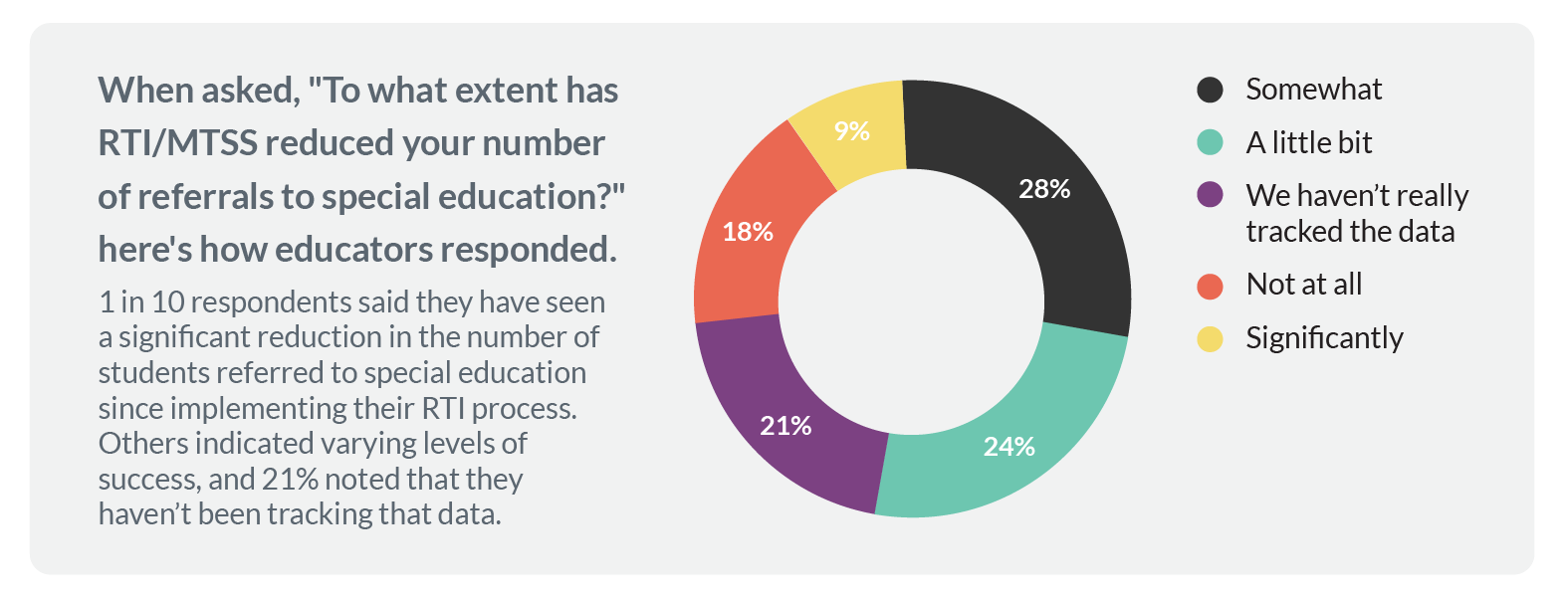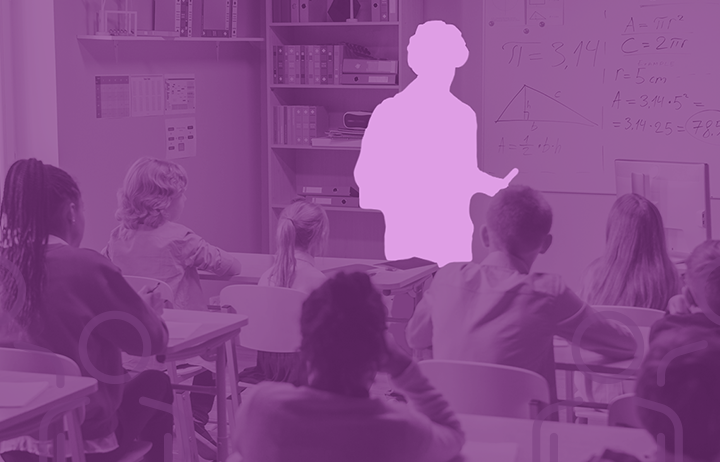For schools implementing an RTI/MTSS model, the end of the school year can be an energizing and pivotal time. Leaders implementing RTI/MTSS have a big responsibility, to deploy the school’s full array of intervention resources to find and help struggling students. Therefore, this model requires periodic checkups to ensure schools align their current practices with RTI/MTSS best practices. The close of school offers staff an ideal time to accomplish this goal by tidying up loose ends in record-keeping, using data to improve classroom instruction, identifying gaps between its intended and actual service delivery, and looking forward to the next phase in its RTI/MTSS program roll-out.
As summer approaches, here are seven steps schools can take to firm up RTI/MTSS procedures, ensure they are carried out with integrity — and prepare for the coming year.
Best Practices for Closing Out This Year & Preparing for Next Year
1. Archive Your RTI/MTSS Information
Schools should give all staff who have responsibility for keeping track of RTI/MTSS information a deadline for completing their records for the current school year before the summer break. Having a district or school-wide RTI/MTSS program management system accessible to all stakeholders helps keep data organized and archived for future use. After the deadline, the school should spot-check student entries in the RTI/MTSS system to verify records are complete.
Did you know?
When asked what challenges they faced in implementing RTI/MTSS, 42% of K-12 survey respondents reported that their RTI/MTSS process wasn’t documented well or wasn’t followed consistently.
Suggested Content:
2. Evaluate Effectiveness of Core Instruction
RTI/MTSS schools typically collect building-wide academic screening at fall, winter and spring checkpoints. These data-sets are invaluable, as they allow a school to judge the effectiveness of its core instruction and, when necessary, provide guidance to teachers on strengthening their instructional practices.
A rule of thumb is that classroom instruction across a school can be considered adequate if at least 80% of students meet or exceed a screener’s performance cut-points. The close of the school year is an ideal time for administrators to meet with grade-level teams to review screening data and brainstorm future instructional ideas to boost students’ collective academic performance.
Example:
If a grade-4 team discovers that 40% of its students routinely score below the expected cut-point on a reading-fluency screener, that team would generate ideas to promote increased fluency via instructional activities.

3. Analyze RTI/MTSS Data to Uncover Performance ‘Pockets’
As schools build a strong RTI/MTSS model, they collect troves of data monitoring student performance. If this data is reliably archived, schools can analyze it to identify pockets of student performance that either exceed or lag behind expectations.
Example:
A building might compare the relative outcomes of two Tier 2 reading groups using the same program to see if there are significant differences across instructors. Or a district might analyze the relative impact of several Tier 2 reading programs used in multiple schools to identify those with stronger versus weaker outcomes. Of course, this type of advanced RTI/MTSS ‘data mining’ requires a school or district first standardize its procedures. Standardizing processes will ensure data sources are valid and reliable, that interventionists collect data with frequency and rigor, and that student data is uniformly stored in electronic format for easy retrieval.
“Advanced RTI/MTSS ‘data mining’ requires a school or district first standardize its procedures.”
Suggested Content:
Your RTI & MTSS Data Analysis Team: Nerve Center of Tier 2 & 3 Services
Annual School-Year RTI/MTSS Guide
4. ‘Recalibrate’ Your RTI/MTSS Procedures
Every school that follows an RTI/MTSS model has its own procedures to identify students for services, document intervention plans, collect data, move students up and down the tiers of intervention, and so on. The end of the school year is an ideal time to review the school’s actual RTI/MTSS practices, identify any gaps in implementation, and ‘recalibrate’ to align those day-to-day practices with the expected RTI/MTSS procedures.
Example:
If the Tier 1 expectation at an elementary building is that teachers will employ weekly grade-level planning time to develop classroom intervention plans, that school can investigate actual practice to verify these teams are in fact using planning time for this purpose, examine sample intervention plans to ensure teachers include research-based intervention strategies, and check the RTI/MTSS data management system to certify classroom intervention plans are being entered electronically.
Data can help the school uncover discrepancies in procedures. It is an expectation, for example, that in a ‘typical’ school, 1-5% of students might be referred to the Tier 3 RTI/MTSS Problem-Solving Team in a given school year. If, as summer approaches, fully 10% of its students have been brought to Tier 3 during the current year, the school can follow up by reexamining its criteria for accepting a Tier 3 referral and the fidelity with which these criteria are being enforced.
5. Recruit Fall Groups Using End-of-Year Screeners
To identify students at academic risk, most schools screen the entire building population 3 times per year (fall/winter/spring). Those data are then used to recruit students whose risk profile indicates they require Tier 2/Tier 3 academic-intervention services. While fall screening data would appear to be the logical data source to recruit fall academic-intervention groups, it presents 2 limitations:
- Tier 2/3 interventionists cannot begin work with students until the school has conducted the fall screening and identified groups, resulting in several weeks of dead-time when at-risk learners are not receiving intervention services.
- In an effort to speed formation of fall intervention groups, the school may be tempted to screen immediately after the start of school. However, students often experience a ‘summer slide’ — a predictable and temporary drop in reading or math skills over the summer. For most students, the summer-slide effect disappears after 4-5 weeks of school. Therefore, districts that screen early — e.g. within the first 2-3 weeks of school — are likely to, ‘lock in’ temporary academic deficits and falsely identify at least some students for Tier 2/3 services whose skills would have rebounded on their own.
Suggested Content:
Not Just for Academics: Expanding RTI/MTSS to Provide Behavioral and Social-Emotional Support Click Here
A solution is to use the end-of-year (spring) academic screening results for 2 purposes:
- to enter or exit students for current spring Tier 2/3 services and also
- to identify fall Tier 2/3 intervention groups before the summer break.
This approach allows academic-intervention groups to meet immediately when school resumes in the fall and encourages the school to schedule the fall screening when student skills have fully recovered from the summer regression. Once fall screening data are collected, the school can update Tier 2/3 groups accordingly.
6. Update Your RTI/MTSS Roll-Out Plan
It can take 3 to 5 years for a school to fully implement the RTI/MTSS academic model. Buildings in the midst of rolling out RTI/MTSS will find the final months of the current school year offer a good vantage point from which to firm up plans for the next phase of implementation slated to start in the fall.
While advanced RTI/MTSS planning is always a good idea, some elements of RTI/MTSS require it.
Example:
Schools seeking to overhaul their system of Tier 2 (supplemental/small-group) interventions, may need to alter multiple elements: e.g. changing the schedule for those services, training Tier 2 providers to deliver new research-based intervention programs, revising academic-screener cut-points used to identify Tier 2-eligible students. Because each change will impact multiple staff, all changes need to be considered, finalized and communicated with relevant staff members well before actual implementation.
7. Prepare RTI/MTSS Professional Development
While schools often do a good job of planning and implementing a comprehensive RTI/MTSS plan, they sometimes overlook the need to provide ongoing professional development to prepare their staff to understand, accept, and work effectively within the plan.
As the school reflects at the close of the school year on the quality of its RTI/MTSS implementation and proposed next steps, the building should also consider what additional training teachers and support staff require to improve delivery of RTI/MTSS services. This professional-development plan should include both the essential RTI/MTSS content to be delivered to teachers and a training calendar extending into the coming school year with opportunities in large- and small-group settings.
Example:
A middle school might realize in the final months of school that their teachers are confused about how students access the various RTI/MTSS tiers of academic intervention. In response, the school creates a simple flowchart defining the RTI/MTSS components, describing how students gain access to each Tier of support, and outlining the responsibilities of each staff member to provide RTI/MTSS services. The school also develops a professional-development plan to present the flowchart, deciding to first share it at an early-fall faculty meeting and then follow up a month later with small-group discussions with instructional teams at each grade level.
“Use RTI/MTSS learnings from this year to structure a training calendar for next year, so staff will have access to opportunities to brush up on essential RTI/MTSS content.”
Concluding Thoughts
A key component of success in implementing an RTI/MTSS model is simply that schools pay attention to the details — verifying that RTI/MTSS records are complete and archived; closing gaps between current and best RTI/MTSS practices; looking forward to the next steps in the unfolding RTI/MTSS roll-out plan. The end of the school year is a strategic time for schools to focus their attention — make productive use of this pivotal moment between the recently elapsed and coming school years!

“Verify that RTI/MTSS records are complete and archived. Close gaps between current and best RTI/MTSS practices. Look forward to the next steps in the unfolding RTI/MTSS roll-out plan.”
Want to get a print-friendly version? Get the eBook here.






